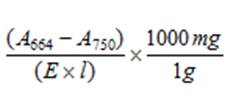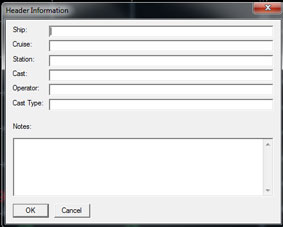Category: Methods
-

Chlorophyll Methods
Chlorophyll Determination SUMMARY: Chlorophyll a is extracted in an acetone solution. Chlorophyll and phaeopigments are then measured fluorometrically using an acidification technique. 1. Principle Seawater samples of a known volume are filtered (< 10 psi) onto GF/F filters. These filters are then placed into 10ml screw-top culture tubes containing 8.0ml of 90% acetone.…
-
CTD System
A Sea-Bird Electronics 911plus V2 CTD collects vertical profile data at every CalCOFI station. In addition to being a dual TCO (temperature, conductivity, and oxygen) system, the CTD also interfaces with a transmissometer, fluorometer, PAR/SPAR meters, altimeter, nitrate, and pH sensor. Connected to a shipboard data-acquisition computer through an electronically-conductive winch wire, sensor data are…
-
Dissolved Oxygen
DISSOLVED OXYGEN SUMMARY: The amount of dissolved oxygen in seawater is measured using the Carpenter modification of the Winkler method. Carpenters modification (1965) was designed to increase the accuracy of the original method devised by Winkler in 1889. Using Carpenters modification, the significant loss of iodine is reduced and air oxidation of iodide is…
-
SeasaveV7 Setup & Data Acquisition
SeasaveV7 on Windows 7 CTD Operator’s Cookbook Turn on deck unit and be sure what is displayed on the front LED panel are non-zeros. In Seasave v7, select RealTimeData/Start from the menu. Do Not store data on disk immediately so select “Begin archiving data when the start archiving command is sent”. Click [Select Output Data…
-
Salinity
Salinity Determination OVERVIEW: This procedure describes the method for the determination of seawater salinity using a Guildline Portasal™ Salinometer (Model 8410). 1. Principle During a cruise a 24 bottle rosette is used to collect seawater salinity samples of ~225 mL from all bottles closed from pre-designated depths. A Guildline Instruments Portasal™ Salinometer (8410A) makes the precise…
-
Primary Productivity Methods
PRIMARY PRODUCTIVITY OVERVIEW: Primary production is estimated from 14C uptake using a simulated in situ technique in which the assimilation of dissolved inorganic carbon by phytoplankton yields a measure of the rate of photosynthetic primary production in the euphotic zone. 1. Principle Seawater samples are incubated with a radioactive substrate to determine the…
-
Primary Productivity History
PRIMARY PRODUCTIVITY CHANGES A description of the method was written February 2010 by D. Wolgast. Changes to the method are listed below. Radioactive Specific Activity Changes Section Date Prepared By Description 3.3 6/10/2016 D. Wolgast 25mCi diluted to 32uCi/ml Batch 0509YW4, 800mls 3.3 8/8/2014 D. Wolgast New 14C Stock: diluted to…
-
ISUS Nitrate
ISUS Nitrate Sensor SUMMARY: Since November 2004, a Satlantic ISUS nitrate sensor has been integrated with a Seabird 911+ CTD-Rosette system deployed on CalCOFI cruises. Cruises typically occupy 75 stations, collecting approximately 1400 discrete seawater samples throughout the water column. The discrete seawater samples are analyzed at-sea for nitrate, nitrite, silicate, phosphate and ammonia…
-
ISUS Nitrate History
ISUS NITRATE HISTORY The original methods description was written Feb 2010 by J. Wilkinson. Changes to the method or instrument are listed below. Changes Cruise/Ship Date Author Description 1611SR+ 11-06-2016 J.Wilkinson ISUS firmware upgraded to v3 allowing ISUScom software usage & sensor recalibration by SIO-CalCOFI, plus batch downloading via USB cable 1203SH+ 3-24-2012 L.…
-

CTD General Practices
CTD General Practices: System Description, Deployment, Data Aquisition, & Maintenance SUMMARY: Since 1993, the CalCOFI program has deployed a Seabird 911 CTD mounted on a 24-bottle rosette during seasonal, quarterly cruises off California. The CTD-rosette is lowered into the ocean to 515m, depth-permitting, on 75 hydrographic stations using the ship’s conductive-wire winch. Data from the…